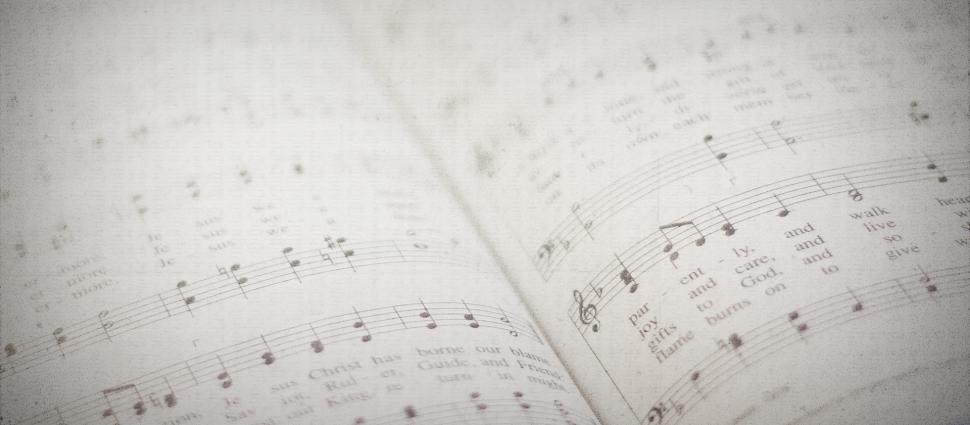Singing from the Same Page

From the earliest days of the Church, the singing of hymns expressed doctrinal truth. With the ease of memorizing text with music, Christians could carry the truth in their hearts and minds—even if they could not read. St. Ambrose famously taught his parishioners Psalms and hymns in the midst of persecution while barricaded together in the basilica of Milan. These expressions of faith rose out of a very real need to be reminded of the truth of the Gospel—especially during difficult and tumultuous times.
In the first five centuries of the Church, various regions developed distinctive musical practices that were reflective of their locations. Just as we recognize certain musical roots and styles associated with places such as New Orleans jazz, Memphis blues, Seattle grunge, Appalachian bluegrass, or Kentucky harmony, certain areas such as Salisbury, Spain, France, Milan, and Rome created particular styles, texts, and musical practices.
Pope Gregory the Great (c. 540-604) reformed the worship of the Church by trying to standardize the various types of regional plainsong sung in different areas—Sarum chant in England, Ambrosian chant in Milan, Carolingian with the Franks, Roman, Gallican in Gaul, and Mozarabic in Spain. Gregory’s desire was to make the singing of the Church easily passed from region to region in a codified fashion—essentially forming the songbook of the Church. His efforts were largely successful; however, some areas persisted in singing the music from their own region.
In this historic example, we see an interesting tension. There is a simultaneous need for musical expression that represents a peculiar place just as there is a desire for Christians from multiple regions to be able to sing together in shared song. Singing the traditional hymns of the faith is important while at the same time continuing to create and express the time and place in which God has placed you.
There are many benefits to shared hymnody. Consider the following:
- It forms a connection to the past and to fellow believers in other places and times. Singing the same songs unites us in a shared faith.
- It allows for Christians to act corporately—literally as one body. When we sing together, we become united in distinctive ways.
- It protects confessional truth as tried and tested over time.
Music often seems to be an overflow of the heart—an excess of emotion that bubbles out whether joy, sorrow, gratitude, or grief. Sometimes a well-known hymn puts words to emotions in times when we cannot think on our own. The consolations of the Gospel flow freely as corporate prayer when we gather and sing “It is Well” or “Abide With Me” with the grieving or dying.
Daily life, distractions, and struggles (as well as the world, the flesh, and the Devil) seek to dislodge the Gospel from our hearts and memory. When personal words fail, how glorious is it to be able to rely on the words of Scripture and the text of a well-worn hymn to give voice to the truth of the gospel and to unite our hearts in hope. It behooves us to ensure that the people we shepherd are well prepared and equipped with songs, psalms, and hymns that are theologically rich, singable (without accompaniment), and truly known—songs that they can wholeheartedly sing and share together.
Gregory Wilbur is Chief Musician at Cornerstone Presbyterian Church (PCA) in Franklin, TN where he also serves as a Ruling Elder. In addition to his work at the church, Greg serves as Dean and Senior Fellow of New College Franklin—a Christian liberal arts college that he helped to start. Greg has released two CDs of his compositions of congregational psalms, hymns and service music. He also writes for choir, orchestra, film and chamber ensembles including the soundtrack for the recently released documentary on Dr. Marytn Lloyd-Jones, Logic on Fire.





